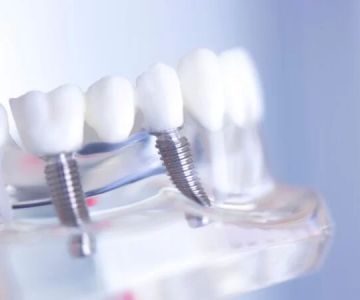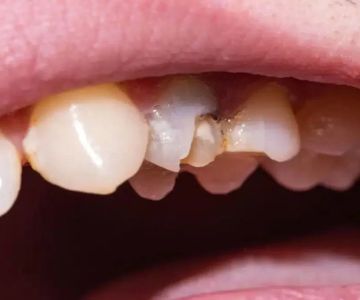- Gingivitis vs Periodontitis: The Key Differences
- Causes of Gingivitis and Periodontitis
- Symptoms and Signs of Gingivitis and Periodontitis
- How to Prevent and Treat Gingivitis and Periodontitis
- When to Visit the Dentist for Gingivitis or Periodontitis
Gingivitis vs Periodontitis: The Key Differences
Gingivitis and periodontitis are two common gum diseases, but they are not the same. Understanding the difference between gingivitis and periodontitis is essential for maintaining good oral health. While both conditions involve inflammation of the gums, their severity and potential impact on your oral health vary significantly. Here’s an in-depth look at these two gum diseases.
Causes of Gingivitis and Periodontitis
The primary cause of both gingivitis and periodontitis is poor oral hygiene that allows plaque, a sticky film of bacteria, to build up on the teeth and gums. However, the progression from gingivitis to periodontitis is due to prolonged untreated inflammation, which can lead to more severe damage.
1. Gingivitis
Gingivitis occurs when the buildup of plaque on the teeth leads to inflammation of the gums. This stage is typically mild and reversible with good oral hygiene practices such as regular brushing and flossing. Other factors, like smoking, certain medications, and conditions such as diabetes, can increase the risk of developing gingivitis.
2. Periodontitis
If gingivitis is left untreated, it can develop into periodontitis, a more serious form of gum disease. In periodontitis, the inflammation spreads deeper into the tissues that support the teeth, including the bone. This can result in gum recession, pockets between the teeth and gums, and tooth mobility. Periodontitis is a major cause of tooth loss in adults and requires professional treatment to manage.
Symptoms and Signs of Gingivitis and Periodontitis
Both gingivitis and periodontitis have distinct symptoms, and recognizing them early can help prevent further damage. Let’s explore the symptoms of each.
1. Symptoms of Gingivitis
The symptoms of gingivitis are typically mild and may include:
- Red, swollen gums
- Bleeding gums, especially when brushing or flossing
- Bad breath or a persistent bad taste in the mouth
Gingivitis is often painless, which is why many people may not realize they have it. However, if left untreated, it can develop into periodontitis.
2. Symptoms of Periodontitis
As periodontitis progresses, the symptoms become more severe and can include:
- Gums that bleed easily, even when not brushing
- Receding gums or teeth that appear longer than normal
- Persistent bad breath or a foul taste in the mouth
- Loose teeth or painful chewing
- Visible pus between the teeth and gums
Periodontitis requires professional dental treatment to prevent tooth loss and other complications.
How to Prevent and Treat Gingivitis and Periodontitis
Preventing and treating gingivitis and periodontitis is essential for maintaining healthy gums and teeth. Early intervention is key to reversing gingivitis, while managing periodontitis often requires more advanced care.
1. Preventing Gingivitis
Good oral hygiene is the best way to prevent gingivitis. Here are some tips:
- Brush your teeth twice a day with fluoride toothpaste
- Floss daily to remove plaque between your teeth
- Visit your dentist for regular check-ups and cleanings
- Avoid smoking or chewing tobacco
2. Treating Gingivitis
If you already have gingivitis, treatment is often simple and effective. Your dentist may perform a professional cleaning to remove plaque and tartar buildup. They may also recommend improved oral hygiene practices and follow-up visits to ensure your gums heal properly.
3. Preventing Periodontitis
While periodontitis is a more serious condition, it can often be prevented with proper oral care. In addition to the steps for preventing gingivitis, make sure to:
- Maintain regular dental check-ups and cleanings
- Address any signs of gum disease early
4. Treating Periodontitis
Treatment for periodontitis is more complex and may involve deep cleaning procedures such as scaling and root planing to remove plaque and tartar from below the gum line. In more severe cases, surgery may be required to restore damaged tissues. Your dentist may also prescribe antibiotics to help control infection.
When to Visit the Dentist for Gingivitis or Periodontitis
If you notice any signs or symptoms of gum disease, it’s important to visit your dentist as soon as possible. Early treatment can help prevent the progression of gingivitis to periodontitis and minimize the risk of tooth loss and other complications. Regular dental visits and cleanings are essential for maintaining optimal oral health.
For further advice and quality products to support your oral health, visit Dentistry Toothtruth for the best dental care items and services.







 Westgate Dental Arts
Westgate Dental Arts Coventry Family Dental
Coventry Family Dental Familia Dental
Familia Dental Dr. Daniel S. Fife, DDS
Dr. Daniel S. Fife, DDS Dentistry At Suburban Square: Michael I. Wollock, DMD
Dentistry At Suburban Square: Michael I. Wollock, DMD Comfort Care Dental
Comfort Care Dental The Importance of Oral Health Education During Pregnancy for a Healthy Pregnancy
The Importance of Oral Health Education During Pregnancy for a Healthy Pregnancy Why Skipping Dental Checkups Can Lead to Bigger Oral Health Problems
Why Skipping Dental Checkups Can Lead to Bigger Oral Health Problems Best Tips for Brushing Your Teeth Properly for Healthy Gums: Essential Techniques for Oral Health
Best Tips for Brushing Your Teeth Properly for Healthy Gums: Essential Techniques for Oral Health Advantages of Porcelain Dental Restorations
Advantages of Porcelain Dental Restorations How Can Diabetes Cause Tooth and Gum Problems? Preventing and Managing Oral Health Issues
How Can Diabetes Cause Tooth and Gum Problems? Preventing and Managing Oral Health Issues Healthy Habits for Promoting Good Oral Health and Hygiene: Tips for a Healthy Smile
Healthy Habits for Promoting Good Oral Health and Hygiene: Tips for a Healthy Smile